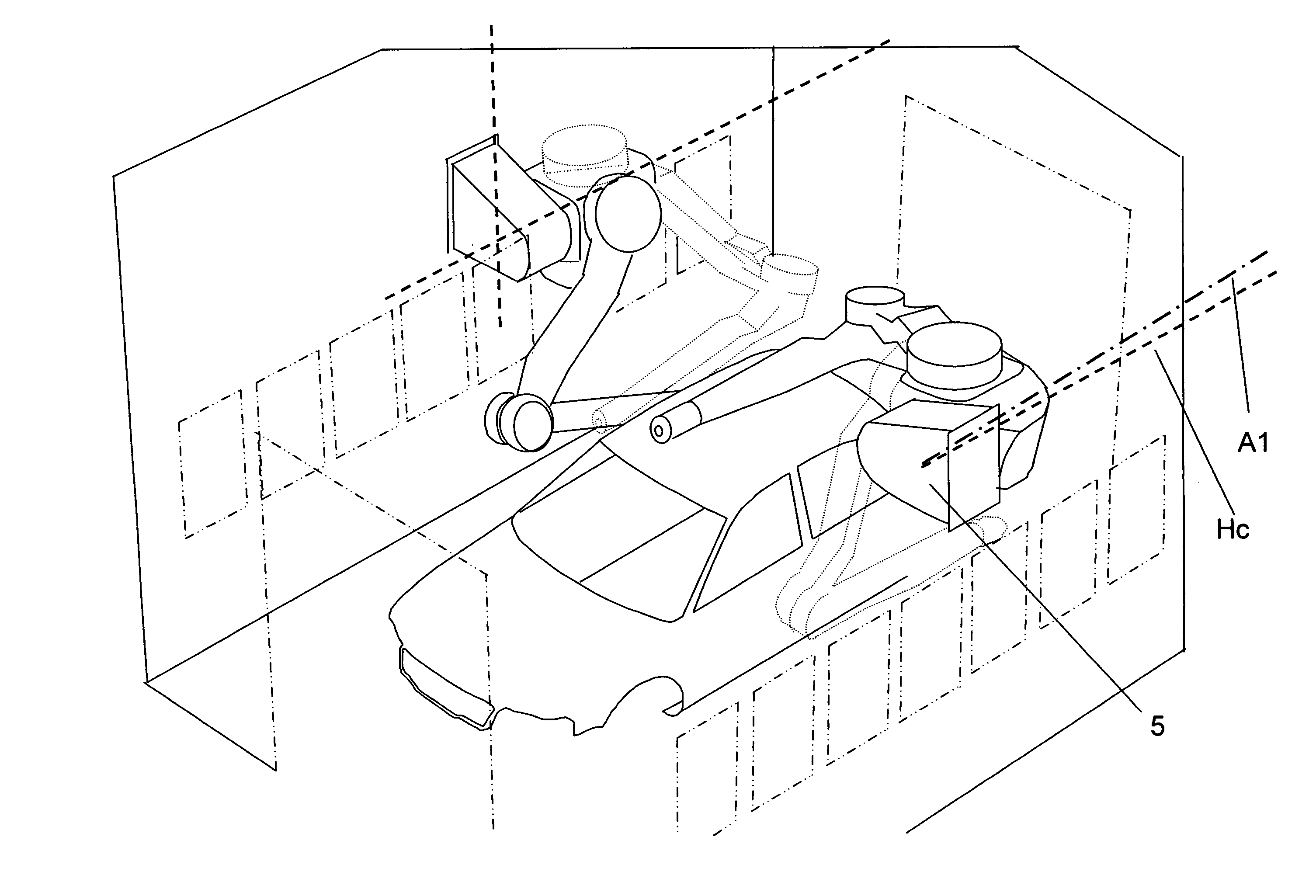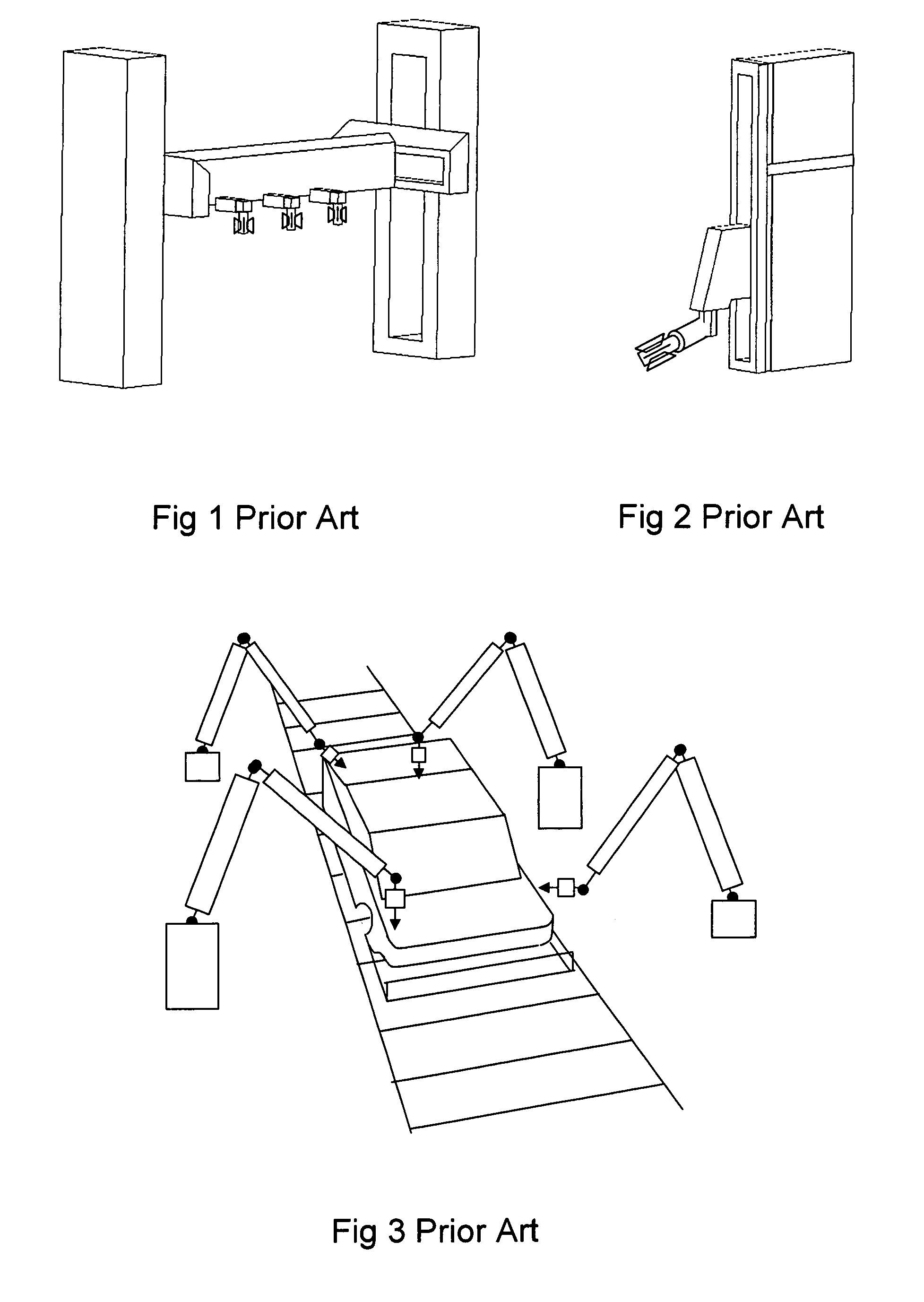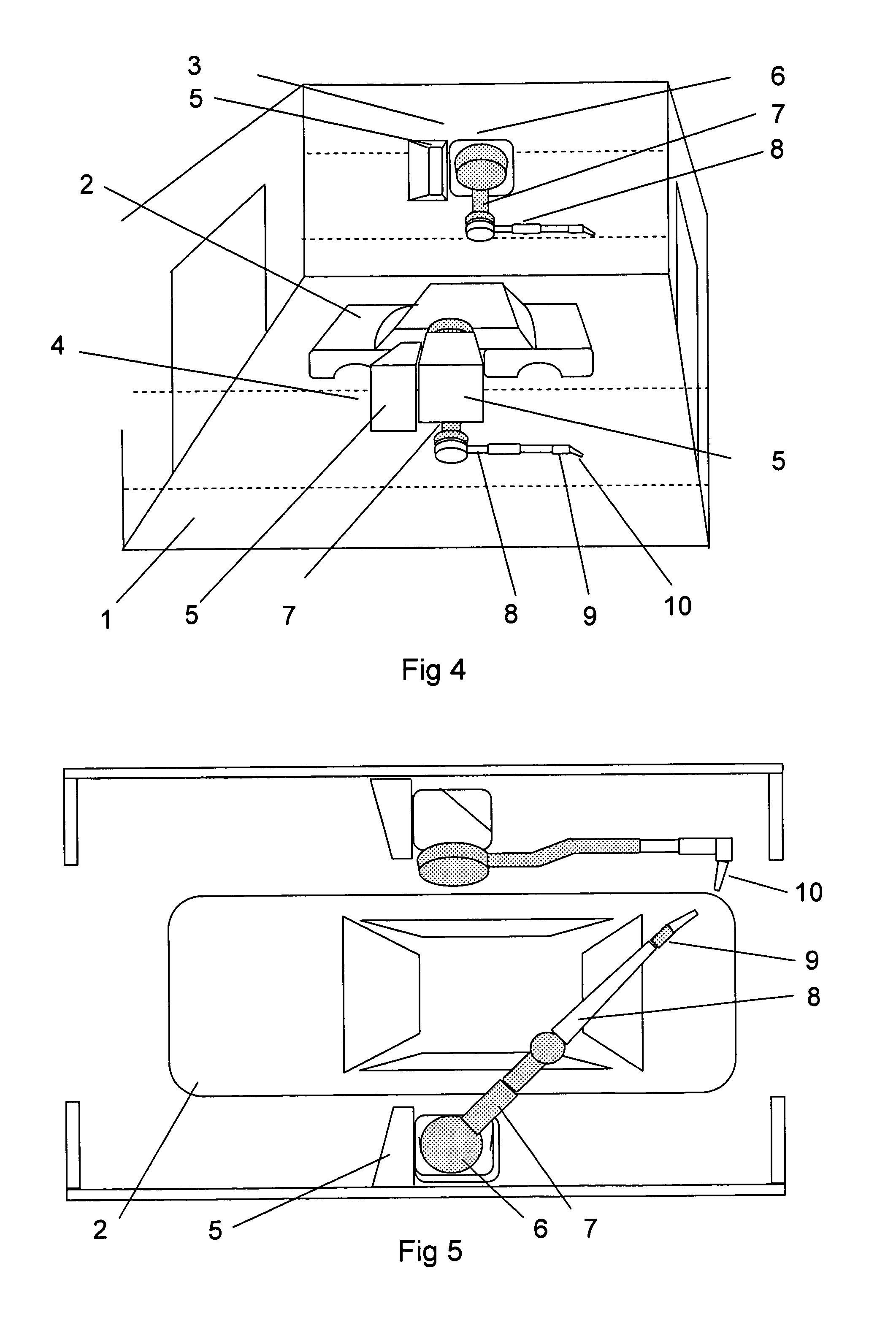Painting system
a technology of painting system and painting surface, which is applied in the direction of manipulators, coatings, program-controlled manipulators, etc., can solve the problems of limited transverse movement range, inability to track the object to be painted, and high cost of track means comprising rails, so as to reduce the waste of paint, improve the production capacity of the robot installed, and reduce the effect of paint was
- Summary
- Abstract
- Description
- Claims
- Application Information
AI Technical Summary
Benefits of technology
Problems solved by technology
Method used
Image
Examples
Embodiment Construction
[0026]According to FIG. 4 a painting system according to the invention comprises a painting booth 1, in which is placed an object, a car body, 2 to be painted. The booth also comprises a first painting robot 3 and a second painting robot 3. Each of the painting robots comprises a base 5 attached to the wall of the booth. The base comprises a cantilever construction and carries a stand 6 rotatably arranged around a first axis, which in the embodiment shown is oriented in the direction of the length of the booth. The stand carries a first arm 7 rotatably arranged around a second axis, which in the embodiment shown is oriented normal to the first axis. The first arm carries a second arm 8 rotatably arranged around a third axis, which in the embodiment shown is oriented parallel to the second axis. The second arm carries an end effector comprising an arm part arrangement 9 with three degrees of freedom moveability. Finally the end effector arrangement caries a painting tool 10 in the fo...
PUM
 Login to View More
Login to View More Abstract
Description
Claims
Application Information
 Login to View More
Login to View More - R&D
- Intellectual Property
- Life Sciences
- Materials
- Tech Scout
- Unparalleled Data Quality
- Higher Quality Content
- 60% Fewer Hallucinations
Browse by: Latest US Patents, China's latest patents, Technical Efficacy Thesaurus, Application Domain, Technology Topic, Popular Technical Reports.
© 2025 PatSnap. All rights reserved.Legal|Privacy policy|Modern Slavery Act Transparency Statement|Sitemap|About US| Contact US: help@patsnap.com



